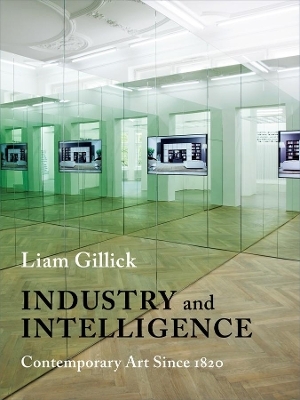
Industry and Intelligence
Columbia University Press (Verlag)
978-0-231-17020-8 (ISBN)
The history of modern art is often told through aesthetic breakthroughs that sync well with cultural and political change. From Courbet to Picasso, from Malevich to Warhol, it is accepted that art tracks the disruptions of industrialization, fascism, revolution, and war. Yet filtering the history of modern art only through catastrophic events cannot account for the subtle developments that lead to the profound confusion at the heart of contemporary art. In Industry and Intelligence, the artist Liam Gillick writes a nuanced genealogy to help us appreciate contemporary art's engagement with history even when it seems apathetic or blind to current events. Taking a broad view of artistic creation from 1820 to today, Gillick follows the response of artists to incremental developments in science, politics, and technology. The great innovations and dislocations of the nineteenth and twentieth centuries have their place in this timeline, but their traces are alternately amplified and diminished as Gillick moves through artistic reactions to liberalism, mass manufacturing, psychology, nuclear physics, automobiles, and a host of other advances.
He intimately ties the origins of contemporary art to the social and technological adjustments of modern life, which artists struggled to incorporate truthfully into their works.
Liam Gillick is an artist based in New York. His work has been featured in numerous exhibitions, including documenta and the Venice and Berlin Biennales, and he has been nominated for a Turner Prize and Vincent Award. He serves on the graduate committee of the Center for Curatorial Studies and Art in Contemporary Culture at Bard College and was a mentor at the Columbia University School of the Arts from 1997 to 2013.
Acknowledgments Introduction: Creative Disruption in the Age of Soft Revolutions 1. Contemporary Art Does Not Account for That Which Is Taking Place 2. Projection and Parallelism 3. Art as a Pile: Split and Fragmented Simultaneously 4. 1820: Erasmus and Upheaval 5. ASAP Futures, Not Infinite Future 6. 1948: B. F. Skinner and Counter-Revolution 7. Abstract 8. 1963: Herman Kahn and Projection 9. The Complete Curator 10. Maybe It Would Be Better If We Worked in Groups of Three? 11. The Return of the Border 12. 1974: Volvo and the Mise-en-Scene 13. The Experimental Factory 14. Nostalgia for the Group 15. Why Work? Notes Index
| Erscheinungsdatum | 08.03.2016 |
|---|---|
| Reihe/Serie | Bampton Lectures in America |
| Zusatzinfo | 50 b&w illustrations |
| Verlagsort | New York |
| Sprache | englisch |
| Maße | 152 x 203 mm |
| Themenwelt | Kunst / Musik / Theater ► Kunstgeschichte / Kunststile |
| Geschichte ► Teilgebiete der Geschichte ► Kulturgeschichte | |
| Geschichte ► Teilgebiete der Geschichte ► Technikgeschichte | |
| Sozialwissenschaften ► Politik / Verwaltung | |
| ISBN-10 | 0-231-17020-3 / 0231170203 |
| ISBN-13 | 978-0-231-17020-8 / 9780231170208 |
| Zustand | Neuware |
| Haben Sie eine Frage zum Produkt? |
aus dem Bereich


